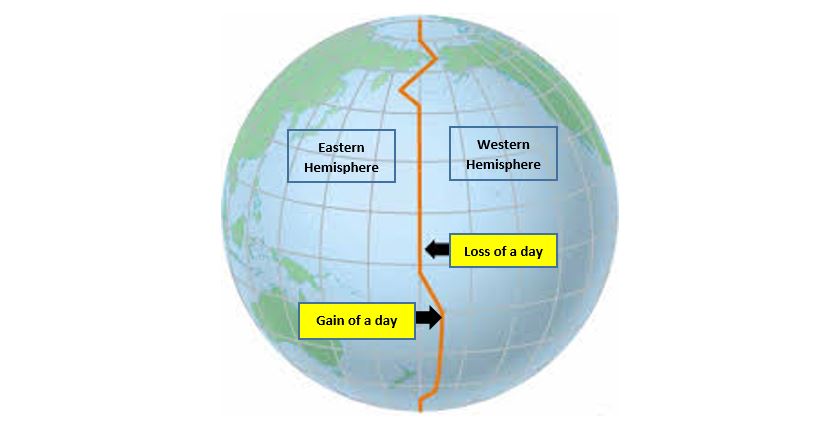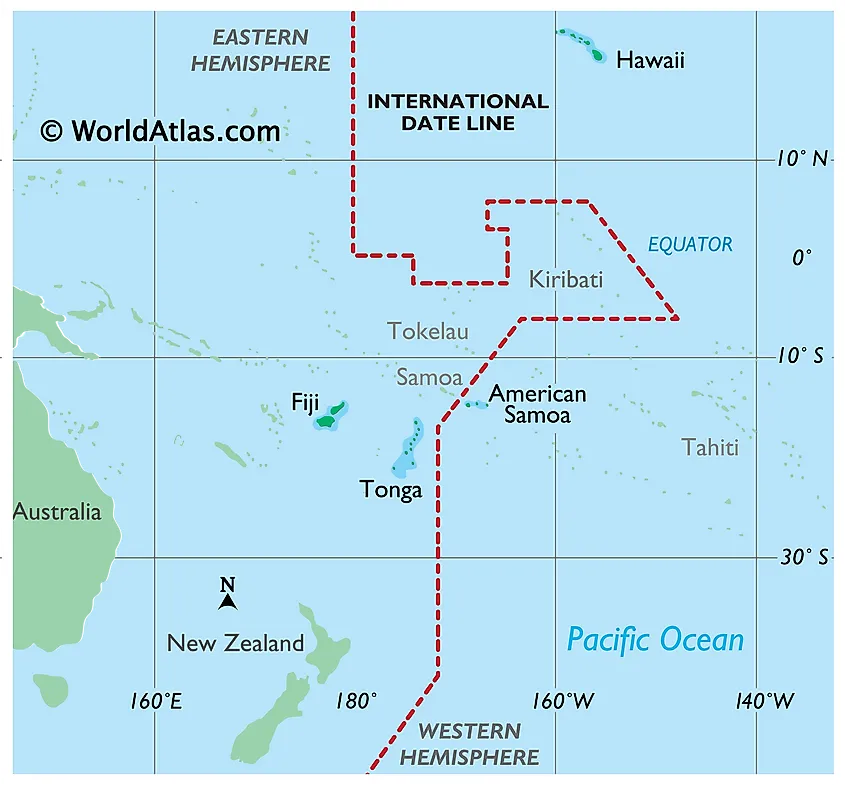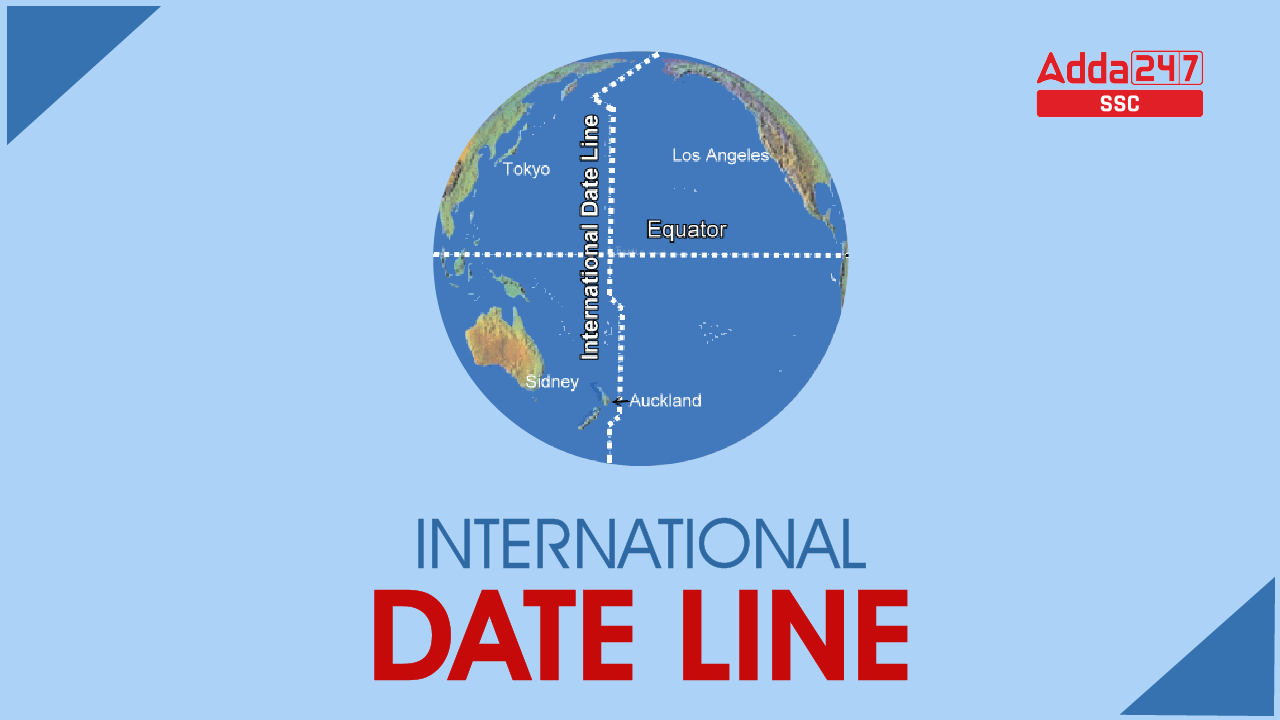International Date Line: Introduction
The international date line (IDL) is an imaginary line that runs from the North Pole to the South Pole in the middle of the Pacific Ocean. When you cross it, depending on which direction you are traveling, you gain or lose a day. When traveling westward, you gain a day; when traveling eastward, you lose a day. The time at this longitude is exactly 12 hours from the 0° longitude, irrespective of whether one travels westward or eastward from the Prime Meridian. The international date line passes through the mid-Pacific Ocean and roughly follows a 180 degrees longitude north-south line on the Earth.
The international date line, established in 1884, is an imaginary line on the surface of the Earth that demarcates the change of a calendar day. It is the anti-meridian or 180th meridian of the modern Prime Meridian. The time difference on either side of this line is 24 hours. It is located halfway around the world from the prime meridian — the 0 degrees longitude line in Greenwich, England.

International Date Line on the Globe
Looking at the International Date Line on the globe, we see that the line runs from the North Pole to the easternmost part of Russia. It falls to the west of Hawaii, keeping the island relatively close to the rest of the country in terms of time zones. It then travels further south through the Pacific Ocean before turning east to encompass the Kiribati Islands. The line continues to the south, passing through New Zealand until it reaches Antarctica and the South Pole. In the mid-Pacific, it curves from the normal 180° meridian at the Bering Strait, Fiji, Tonga, and other islands to prevent confusion of day and date in some of the island groups that are cut through by the meridian.

International Date Line: Significance
The significance of the International Date Line is as follows:
1. Uniformity in Time Measurement: The International Date Line provides a standardized reference point for measuring time across the globe. It ensures that nations and regions maintain a consistent calendar system, preventing confusion and discrepancies in time measurement. This uniformity is essential for international trade, coordination, and global interactions.
2. International Travel and Time Zones: As people travel across time zones, the International Date Line plays a crucial role in ensuring that dates and days are adjusted accordingly. It allows travelers to keep track of time and adjust their schedules as they cross the line, preventing confusion and maintaining consistency in time measurements. Travelers who cross the International Date Line can experience the phenomenon of gaining or losing a day, adding a unique element to their journeys.
3. International Dateline Islands and Cultural Significance: The International Date Line intersects various islands and archipelagos, such as Samoa, Kiribati, and Tonga. These islands have specific agreements and policies regarding the alignment of their time with the International Date Line to accommodate cultural, economic, or geographical considerations. The positioning of the line in these areas has cultural significance, as it can impact daily life, traditions, and local festivities.
4. Timekeeping and Astronomical Observations: The International Date Line is closely linked to the establishment of timekeeping standards and the coordination of astronomical observations. It serves as a fundamental reference point for determining Coordinated Universal Time (UTC) and helps synchronize global timekeeping systems. Additionally, it assists astronomers, scientists, and researchers in accurately documenting celestial events and observations, which often require precise time references.
| Check Other Links: | |
| Prime Ministers Of India | Parliament of India |
| Dams In India | Largest State of India |



 How can I get selected for Delhi Police ...
How can I get selected for Delhi Police ...
 SSC CHSL Vs. SSC CGL – What Changes in S...
SSC CHSL Vs. SSC CGL – What Changes in S...
 Importance of Solving Previous Year Pape...
Importance of Solving Previous Year Pape...









